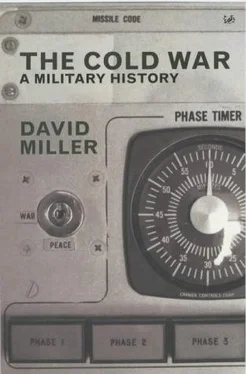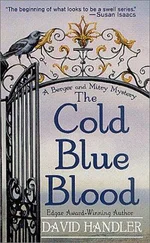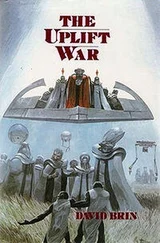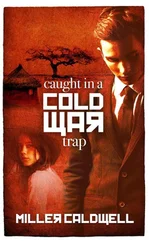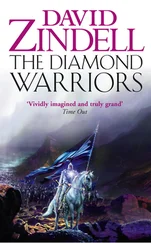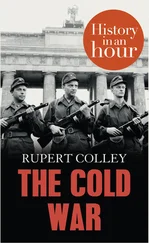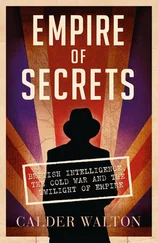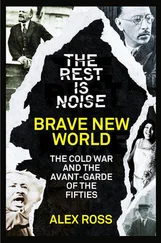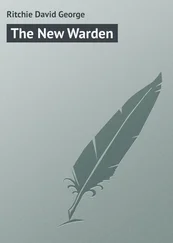R. S. Norris, et al., Nuclear Weapons Databook, Volume V: British, French and Chinese Nuclear Weapons (Westview Press, Boulder, Col., 1994), p. 385.
United States Military Posture for FY 1983 (The Organization of the Joint Chiefs-of-Staff, Washington DC, 1982), p. 117.
Barbara G. Levi, Frank N. von Hippel, William H. Dogherty, ‘Civilian Casualties from “Limited” Nuclear Attacks on the USSR’, International Security , vol. 12, no. 3 (winter 1987/88), pp. 168–9. The strike plan on which their study was based is given in Appendix 28.
NATO: Facts and Figures , 11th edn (NATO Information Service, Brussels, 1989), p. 259.
Norwegian Defence: Facts and Figures (Royal Ministry of Defence, Oslo, 1995), p. 37.
Norris et al., Nuclear Weapons Databook, Volume V , p. 363.
Cochrane et al., Nuclear Weapons Databook, Volume II , pp. 50–51.
Max Walmer, An Illustrated Guide to Strategic Weapons (Salamander Books, London, 1988), p. 67.
Conway’s All the World’s Fighting Ships: 1947–1995 , p. 356.
Sokolovskiy, Soviet Military Strategy , p. 300.
NATO Military Committee Document MC-14/2 (NATO Headquarters, Fontainebleau, 1956).
The Falklands Campaign: The Lessons (Cmnd 8758, Her Majesty’s Stationery Office, London, 1982), paragraph 243.
UK Royal Navy, General Statistics (D/DPR/129/3/11/9, dated 17 April 1991).
Sokolovskiy, Soviet Military Strategy , p. 250.
NATO and the Warsaw Pact: Force Comparisons (NATO Information Services, Brussels, 1984).
A. J. Alexander, Armor Development in the Soviet Union and the United States (Rand Corporation, Santa Monica, 1976), p. 127.
Sokolovskiy, Soviet Military Strategy , p. 141.
Sun Tzu, The Art of War , trans. and intro. Samuel B. Griffith (Oxford University Press, London, 1963), p. 69.
Details of the NATO Alert Systems are contained in PRO DEFE 5/166 (Chiefs-of-Staff Paper 27/66) and in PRO FO371/190667.
‘Declaration Regarding the Defeat of Germany and the Assumption of Supreme Authority by the Allied Powers’, signed in Berlin at 1800 hours Central European Time, 5 June 1945, by General of the Army Dwight D. Eisenhower (USA), Marshal of the Soviet Union G. Zhukov (USSR), Field Marshal Sir Bernard Montgomery (UK) and General J. de Lattre de Tassigny (France).
Paper JP(62)6 (Final), dated 19 June 1962, in PRO/DEFE 11/489.
J. J. Sokolsky, Seapower in the Nuclear Age: The United States Navy 1949–80 (Routledge, London, 1991), pp. 61, 74.
PRO/DEFE 11/491.
R. J. S. Corbett, Berlin and the British Ally: 1945–1990 (published privately, 1992), p. 62.
Ibid., p. 94.
T. B. Cochrane, W. M. Arkin, and M. M. Hoenig, Nuclear Weapons Databook, Volume I: US Nuclear Forces and Capabilities (Ballinger, Cambridge, Mass., 1984), pp. 30–31.
News Conference, 3 January 1955.
Annual Report to Congress: Fiscal Year 1975 (US Department of Defense, Washington DC, 1974), p. 82; quoted in W. van Cleave and S. T. Cohen, Tactical Nuclear Weapons: An Examination of the Issues (Macdonald and Jane’s, London, 1978).
Annual Report to Congress: Fiscal Year 1982 (US Department of Defense, Washington DC, 1981), p. 129.
United States Military Posture for FY 1983 (The Organization of the Joint Chiefs-of-Staff, Washington DC, 1982).
Sir Solly Zuckerman to the British minister of defence, 7 August 1962 (PRO DEFE 13/254).
This is based on information contained in the Federal German government document Militärische Planungen des Warschauer Paktes in Zentraleurope – Eine Studie (Warsaw Pact Military Plans in Central Europe: A Study) , issued by the Federal Ministry of Defence Press Office, Bonn, Germany, in February 1992.
D. Ball, Targeting for Strategic Defence (International Institute for Strategic Studies, London, Adelphi Paper No. 185, summer 1983), p. 5.
Cochrane et al., Nuclear Weapons Databook, Volume I , p. 6.
Cave Brown (ed.), Operation World War III , p. 24.
Ball, Targeting for Strategic Defence , p. 8.
Ibid., p. 9.
Glasstone and Dolan, The Effects of Nuclear Weapons .
The JIGSAW reports are in PRO/DEFE 11/436.
‘The Consequences of “Limited” Nuclear Attacks on the United States’, International Security , vol. 10, no. 4 (spring 1986), pp. 3–45.
Levi et al., ‘Civilian Casualties from “Limited” Nuclear Attacks on the USSR’, pp. 168–89.
Herman Kahn, On Escalation (Pall Mall Press, London, 1965 (reprint of earlier US edn)), pp. 95, 97.
Nuclear Planning Group, Final Communiqué, Taormina, Italy, 17–18 October 1991, paragraph 6.
Hackett et al., The Third World War .
President Jimmy Carter in a letter to Senator John C. Stennis dated 11 July 1977; quoted in van Cleave and Cohen, Tactical Nuclear Weapons , p. 8.
Sun Tzu, The Art of War , p. 76.
